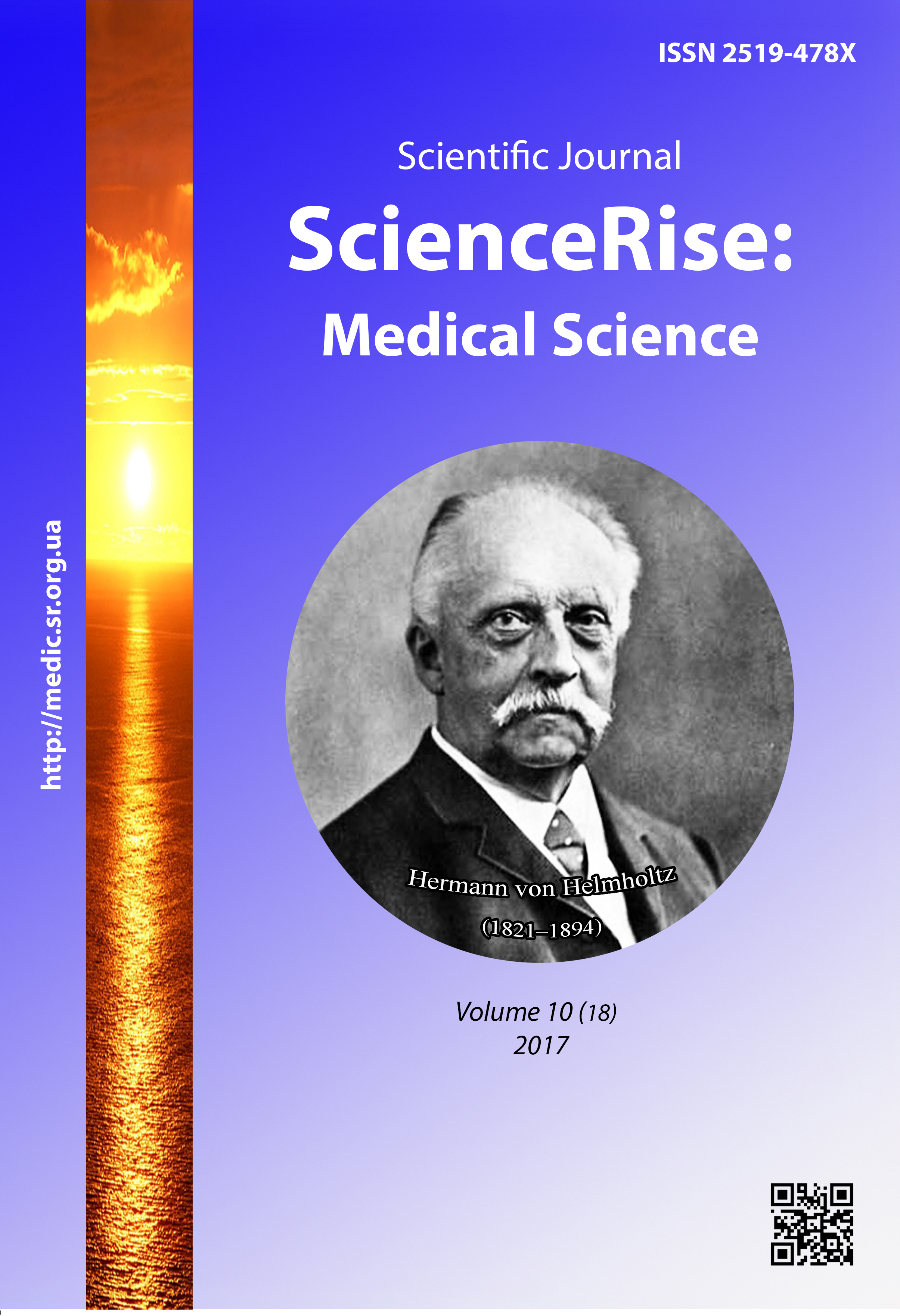Analysis of erythropoiesis indicators in HIV-infected persons and patients with HIV/TB co-infection depending on anemia severity level
DOI:
https://doi.org/10.15587/2519-4798.2017.113312Keywords:
anemia, HIV-infection, HIV/TB co-infection, erythropoietinAbstract
The aim of the work was the analysis of erythropoiesis (EP) in HIV-infected persons and patients with HIV/TB co-infection depending on anemia severity.
Methods of research: the study included 124 patients (62 patients with HIV-infection and 62 patients with HIV/TB co-infection). The control group included 32 practically healthy donors. All patients underwent the determination of anemia severity and erythropoiesis indicators.
Results. HIV-infected persons with anemia of III severity degree has erythropoietin (ERO) content 14,3 ± 1,5 iUn/ml that is essentially lower than in the control group and comparison group (р<0,001). ERO content in blood serum of patients with HIV/TB co-infection with anemia I, II and III is essentially higher (135,8 ± 38,7, 203,7 ± 58,3 and 330,1 ± 127,2 iUn/ml) respectively against the same value in the control and main groups (23,7 ± 1,12 iUn/ml and 21,4 ± 1,89 iUn/ml, р <0,001) – in 8 times.
Conclusions. The analysis of erythropoiesis indicators revealed the reliably low level of erythropoietin in patients with HIV-infection at severe anemia compared with the control group and patients with HIV/TB co-infection and the reliably high erythropoietin level in patients with HIV/TB co-infection at middle and severe anemia compared with the control and main groups
References
- Muhtarov, D. Z., Sultanova, P. A. (2009). Osobennosti klinicheskogo techeniya i povyshenie ehffektivnosti lecheniya tuberkulyoza lyogkih u zhenshchin fertil'nogo vozrasta s nalichiem zhelezodefitsitnoy anemii. Tuberkulyoz i bolezni lyogkih, 86 (12), 45–50.
- Popova, A. A. (2010). Kliniko-patogeneticheskoe znachenie dinamiki immunologicheskih pokazateley u bol'nyh VICH-infektsiey v sochetanii s tuberkulezom. Moscow, 22.
- Nikolaeva, O. D. (2012). Vnelegochnyy tuberkulez u VICH-infitsirovannyh. Tuberkuloz, lehenevi khvoroby, VIL-infektsiya, 3, 75–78.
- Protsiuk, R. H. (2016). Aktualni pytannia ko-infektsyi tuberkuloz/VIL/SNID v Ukraini. Tuberkuloz, lehenevi khvoroby, VIL-infektsiya, 1, 84–92.
- McLean, E., Cogswell, M., Egli, I., Wojdyla, D., & de Benoist, B. (2008). Worldwide prevalence of anaemia, WHO Vitamin and Mineral Nutrition Information System, 1993–2005. Public Health Nutrition, 12 (04), 444. doi: 10.1017/s1368980008002401
- Justice, A. C., P. Modur, S., Tate, J. P., Althoff, K. N., Jacobson, L. P., Gebo, K. A. et. al. (2013). Predictive Accuracy of the Veterans Aging Cohort Study Index for Mortality With HIV Infection. JAIDS Journal of Acquired Immune Deficiency Syndromes, 62 (2), 149–163. doi: 10.1097/qai.0b013e31827df36c
- Means, R. T. (2003). Recent developments in the anemia of chronic disease. Curr Hematol Rep., 2 (2), 116–121.
- Deeks, S. G. (2009). Immune dysfunction, inflammation, and accelerated aging in patients on antiretroviral therapy. Top HIV Med., 17 (4), 118–123.
- Weiss, G., Goodnough, L. T. (2005). Anemia of Chronic Disease. New England Journal of Medicine, 352 (10), 1011–1023. doi: 10.1056/nejmra041809
- Theurl, I. (2006). Dysregulated monocyte iron homeostasis and erythropoietin formation in patients with anemia of chronic disease. Blood, 107 (10), 4142–4148. doi: 10.1182/blood-2005-08-3364
- Abrosimova, A. A., Hasanova, G. R., Anohin, V. A. et. al. (2011). Vliyanie antiretrovirusnoy terapii na uroven' gemoglobina u VICH-infitsirovannyh patsientov. Mater. mezhregion. nauch.-prakt. konf. «Infektsionnye bolezni vzroslyh i detey. Aktual'nye voprosy diagnostiki, lecheniya i profilaktiki». Kazan', 43.
- Goncharik, I. I. (2006). Nasledstvennyy gemohromatoz. Meditsinskiy zhurnal, 3, 18–20.
- Dolgih, T. I., Chereshnev, V. A., Nazarova, O. I. (2004). Rasprostranennost' sh diagnostika opportunisticheskih infektsiy, vyzvannyh tsitomegalovirusom i parvovirusom V19 u bol'nyh s vtorichnymi immunodefitsitami. Ehpidemiologiya i infektsionnye bolezni, 1, 35–38.
Downloads
Published
How to Cite
Issue
Section
License
Copyright (c) 2017 Anastasiia Kuznietsova, Volodymyr Kozko, Kateryna Iurko, Anatoliy Gavrylov, Tatiana Synenko

This work is licensed under a Creative Commons Attribution 4.0 International License.
Our journal abides by the Creative Commons CC BY copyright rights and permissions for open access journals.
Authors, who are published in this journal, agree to the following conditions:
1. The authors reserve the right to authorship of the work and pass the first publication right of this work to the journal under the terms of a Creative Commons CC BY, which allows others to freely distribute the published research with the obligatory reference to the authors of the original work and the first publication of the work in this journal.
2. The authors have the right to conclude separate supplement agreements that relate to non-exclusive work distribution in the form in which it has been published by the journal (for example, to upload the work to the online storage of the journal or publish it as part of a monograph), provided that the reference to the first publication of the work in this journal is included.









